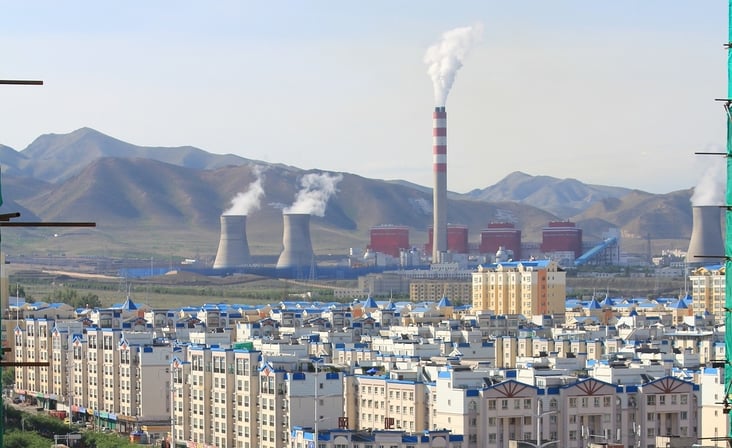This post is one in a series of feature stories on trends shaping advanced energy markets in the U.S. and around the world, drawn from Advanced Energy Now 2016 Market Report, which was prepared for AEE by Navigant Research.

Nuclear facility in Urumqi, Northern China. Via.
China continues its highly ambitious deployment of electricity generation of all kinds domestically and continues to have a major impact by exporting its technology as well. China’s most recent 2020 energy targets call for 200 GW of solar PV, 250 GW of wind, and a steady rollout of nuclear power: 58 GW by 2021, 150 GW by 2030, and 400-500 GW by 2050. According to the World Nuclear Association, China currently is home to 30 nuclear power reactors currently in operation, an additional 24 under construction, and more about to start construction, which means the country is on track to hit its nuclear targets, just as it is with its solar PV and wind targets. By far, China is leading the global nuclear market, which totaled $18.1 billion in 2015, up 13% over 2014 – though still down from a five-year peak of $40.8 billion in 2011.
In addition to pursuing staggering domestic targets, the Chinese government is taking a “going global” approach to nuclear, exporting its nuclear technology, including heavy components in the supply chain. Deals to date for China’s nuclear exports include the following:
-
EDF Energy and China signed a deal to build the 3.2 GW Hinkley Point nuclear power plant in Somerset, England, worth $26.2 billion in late 2015.
-
Pakistan struck deals with Chinese vendors for four nuclear power plants at two sites totaling approximately 4 GW at a cost of nearly $12 billion.
-
Chinese General Nuclear Power Corp. signed a deal worth $7.8 billion to construct two additional units at the Cernavoda plant in Romania, each with a capacity of at least 720 MW.
-
Argentina signed deals with Chinese National Nuclear Corp. (CNNC) worth $5.8 billion for an 800 MW project.
Meanwhile, in the United States, in late 2015, federal regulators approved an operating license for Tennessee Valley Authority’s (TVA’s) 1,150 MW Watts Bar 2 unit – nearly 43 years following its initial permit to begin construction was granted. According to World Nuclear News, construction of Watts Bar 2, a pressurized water reactor, began in 1972 but work was suspended in 1985 when the unit was about 55% complete. TVA restarted work on the unit in 2007, and awarded Bechtel the engineering, procurement, and construction contract.
Together, Unit 2 and Watts Bar’s already operating Unit 1 will have a rated capacity of 2.3 GW. Other notable developments in the United States include:
-
EPA’s Clean Power Plan allows new nuclear to be credited as zero-emission generation and at least three states, Tennessee, Georgia, and South Carolina, appear likely to use nuclear as a signi cant part of their compliance strategies although it remains to be seen whether other states will take this path.
-
There is growing interest in the so-called “modular” nuclear reactors being developed by companies such as NuScale, which has attracted investment by Fluor Corp. Nuclear equipment provider Westinghouse has also been conducting its own research on modular nuclear technology.
-
Two Massachusetts Institute of Technology-trained scientists are pushing a type of nuclear power generation that is designed to consume its own waste. Nuclear physicists Leslie Dewan and Jacob DeWitte have founded separate but comparable startup companies – Transatomic Power and Upower, respectively – that focus on nuclear generators capable of operating on their own radiated waste, which removes the need for trucking and storing spent radioactive material.
-
The Bill Gates-backed nuclear power company TerraPower has signed an agreement with China’s CNNC to work together on advanced nuclear technologies that tackle some of nuclear power’s toughest issues: waste, safety, and cost.
